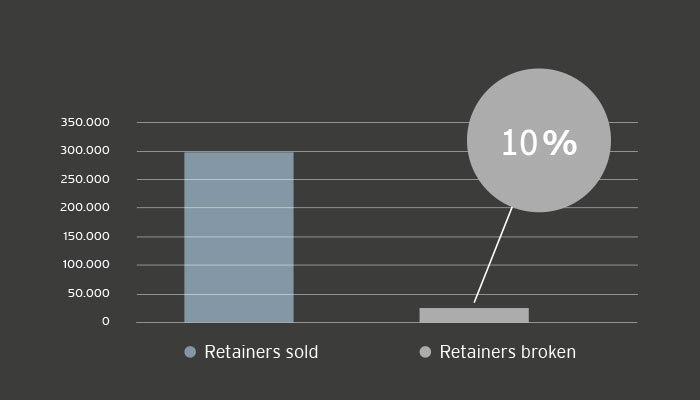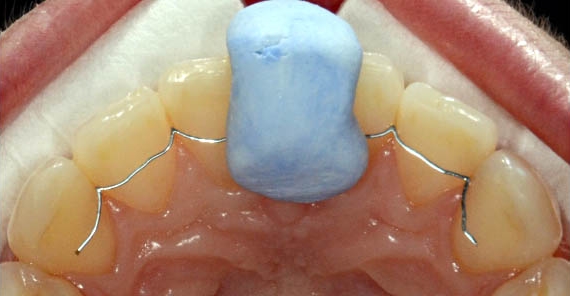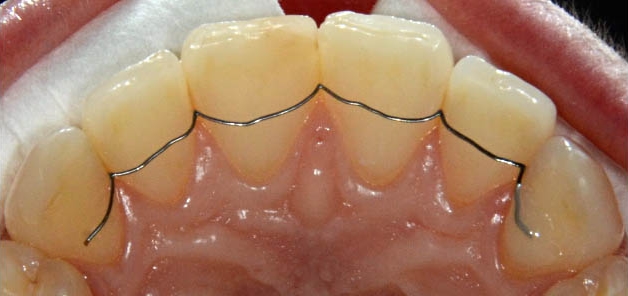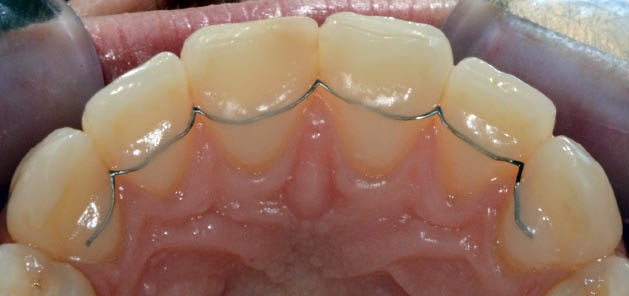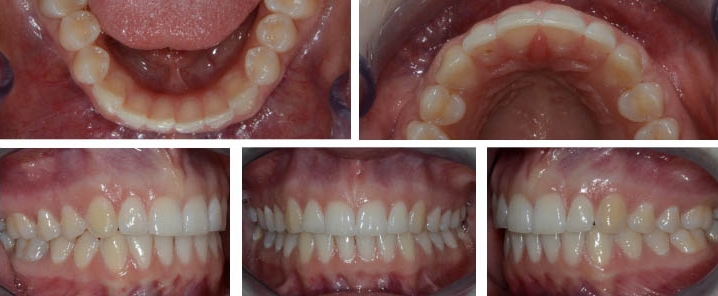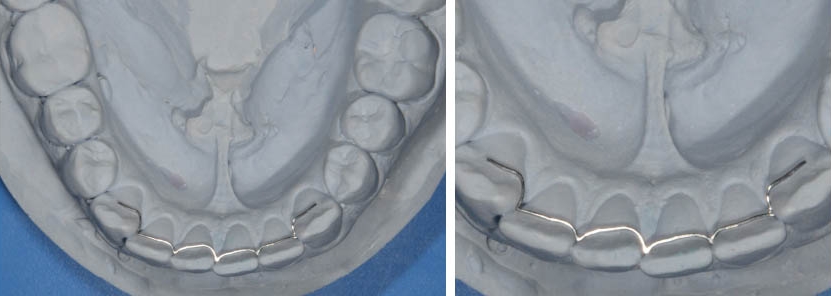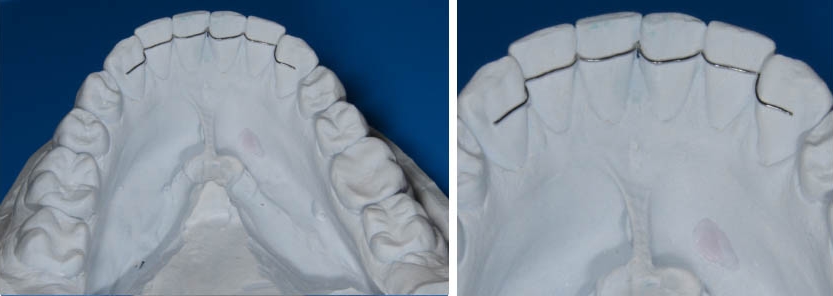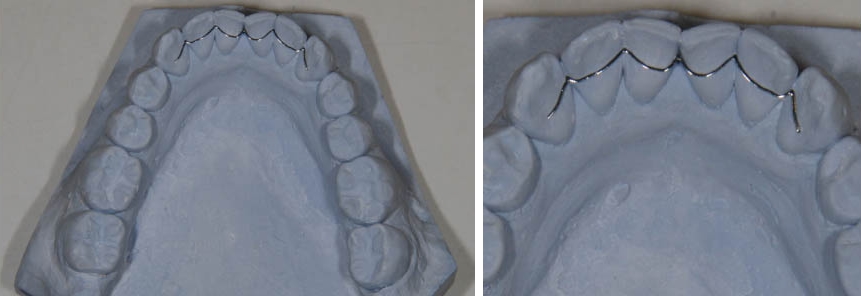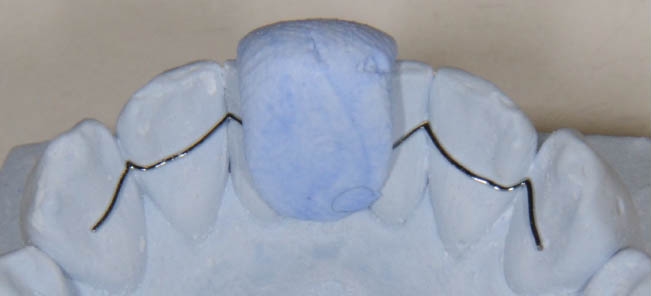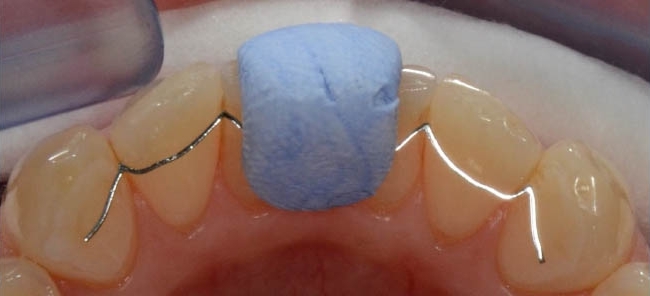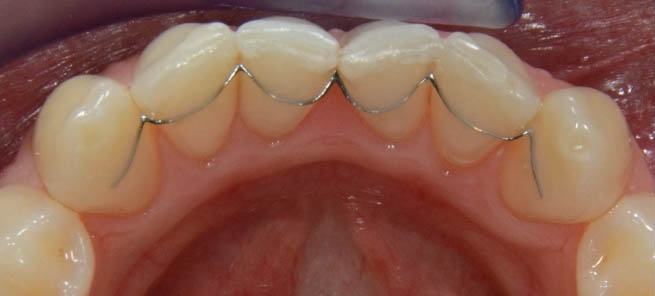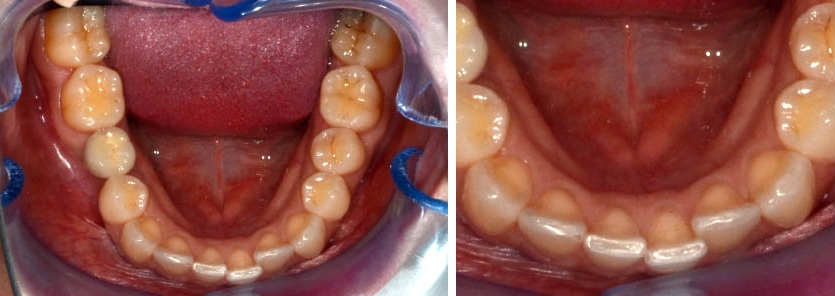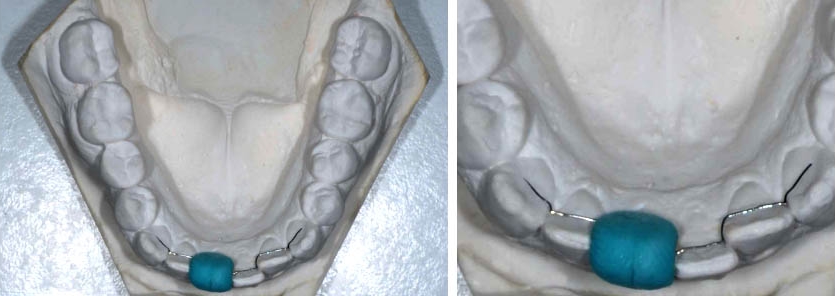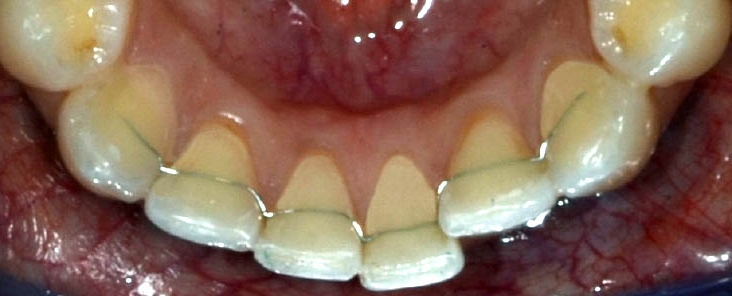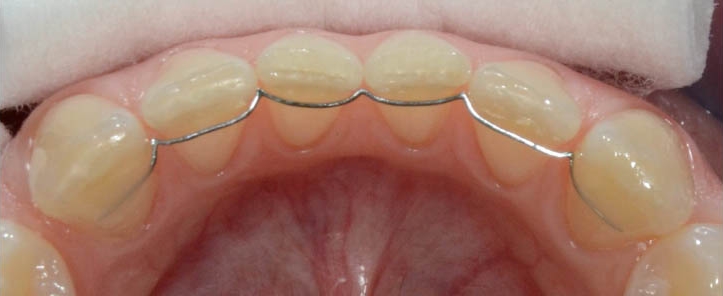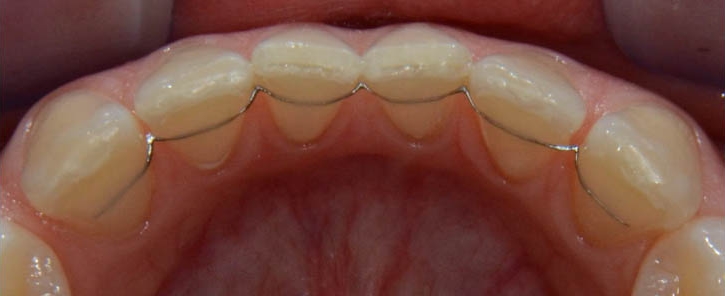THE BREAK-PROOF,
ULTRA-THIN PRECISION RETAINER
MEMOTAIN® perfectly blends accuracy and material strength (fracture rate of only 1%) to ensure the best fit. Thanks to the CAD/CAM manufacturing process, MEMOTAIN® retainers are more precise than a handcrafted lingual retainer could ever be. The new MEMOTAIN® 2.0 features such as smoothing specific points in interdental areas or partial distances facilitate accurate positioning and improve the overall stability. The material too is innovative: MEMOTAIN® retainers are manufactured using the shape-memory alloy NITINOL and as a result are much thinner and more comfortable to wear in contrast to conventional retainers. Once it is brought to shape, this innovative material cannot be bent any more. Thanks to the specifically tailored transfer jig, fitting the retainer is child's play. Maximum convenience for you and maximum comfort for your patients.
DETAILED VIEW
SCHEU-DENTAL's retainers are made using computer-aided design (CAD) and computer-aided manufacturing (CAM) processes. Thanks to the innovative manufacturing process, MEMOTAIN® is made to fit and, with a thickness of 0.4 mm x 0.4 mm, is much thinner than conventional lingual retainers.
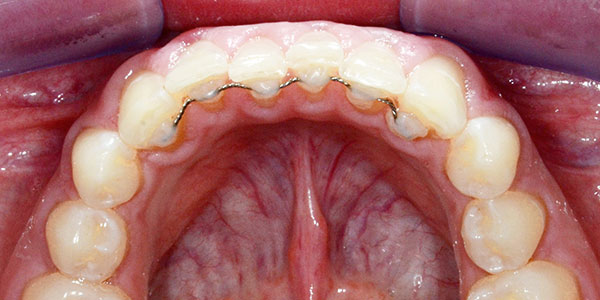

WORTH KNOWING
MORE DURABLE THAN CONVENTIONAL RETAINERS
Even the best retainer in the world can break at some point. This is often due to improper application; in other instances, the fault may be in the material or design – issues we are constantly working on improving. To further optimise the quality of our MEMOTAIN® retainers, we carefully examine every reject, every customer complaint and are constantly committed to developing new solutions and improvements, for instance the innovative MEMOTAIN® 2.0 features. And we are successful! MEMOTAIN® retainers have a material fracture rate of only 1%* – this is clearly far lower than that of conventional retainers which have a fracture rate of 10%.
* Source: Long-Term Experience with Direct-Bonded Lingual Retainers, 1991, ESPEN H. DAHL, DDS, BJORN U. ZACHRISSON, DDS, PHD.
** Source: Statistical data of SCHEU-DENTAL, data sample involving 30,000 retainers.
THE ADVANTAGES
TREATMENT CASES
MEMOTAIN® SALES IN EUROPE
With a strong partner by our side since 2018, we are able to ensure prompt delivery of MEMOTAIN® within Europe. In many European countries, the international Group Ormco (www.ormcoeurope.com) markets MEMOTAIN® on our behalf. Thanks to Ormco’s extensive network of sales teams across several regions, you will always be able to contact a specialist in your vicinity who will promptly deal with your concerns. For any questions on the sales and marketing of MEMOTAIN® in Europe, contact Ormco directly at: memotain@ormco.com



